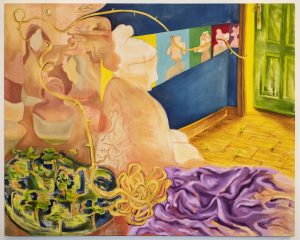
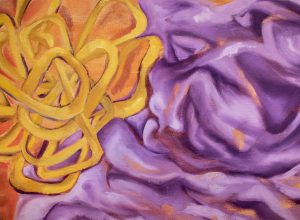
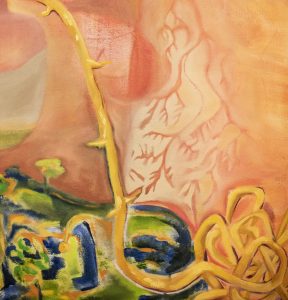
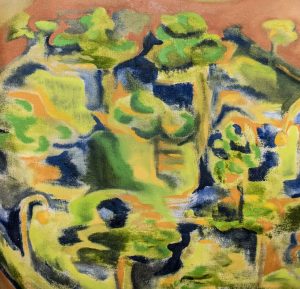
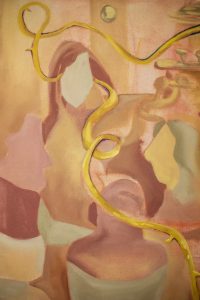
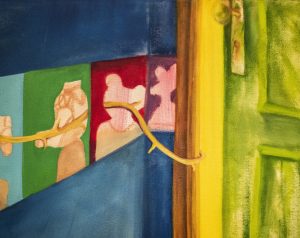
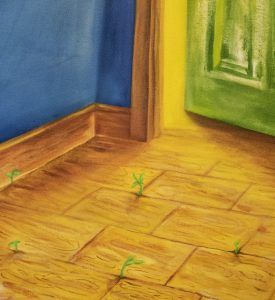
A child is sleeping, with a tangled yellow vine for a head. The vine unravels and travels throughout the painting. It revolves around an unfinished subject: a caregiver, abstracted by evil dynamics, who is my second mother. From a comfy bed covered with purple silky sheets, the vine weaves into an aerial view of a park at night. Then, curling upward into the grown-up scene, adults sit around a table in a fancy beige café; the vine goes back to the same bedroom where it all started, realizing an escape through a slightly ajar door from which a beam of light enters the room. Some subjects are recognizable as human, some are plant-human hybrids, and others are just empty silhouettes. Here, a type of hierarchy abstracts the mind of a child, which struggled to find hope in human nature and now looks for its meaning in the nature of plants.
—
What is it about traumatic memories that make them so powerful, and overshadowing?
Do we feed them evil by remembering? Or is it remembering that will cleanse — exorcise — them? It would not transform them, and it would not erase them. I hope not. I don’t want to grasp onto the evolutionary purpose of memories. Rather, I look to bear a further meaning, a constructive mechanism instead of a survival machine.
How can I construct a place where my worst fears narrate themselves?
I draw a line to define a limit. I curve the line to where my senses guide me, through my memories, I look in, I paint, I look out, look forward.
I remember a deep blue wall, divided by a wallpaper stripe with Disney characters on it. Contained silhouettes that turned into demons at night — with time this reversed, and the brighter the daylight the more terrifying they become. There is the blue, as I remembered, but there’s also that bright light coming through the door, illuminating a path to grow by acknowledging dynamics that constructed those evil memories, and which are still present yet intangible, just as the light source; because maybe I’ll never know what’s behind that green door. That’s not important now. Now, choreograph your eyes around the yellow vine that unravels from a nightmarish sleep into a beige café
the fantasy of an uncut umbilical cord.
Roots, vines and vessels that I render
to remember.